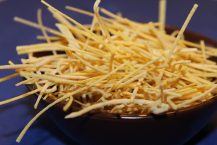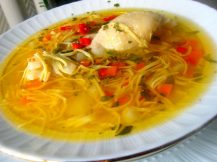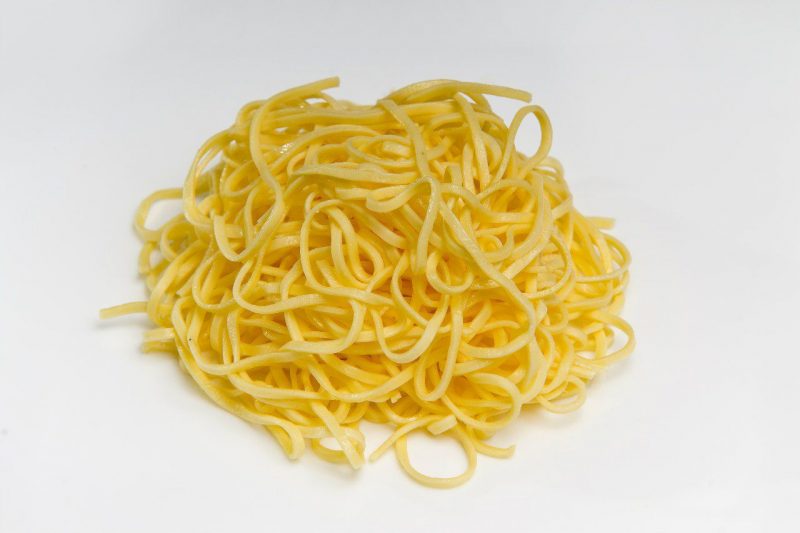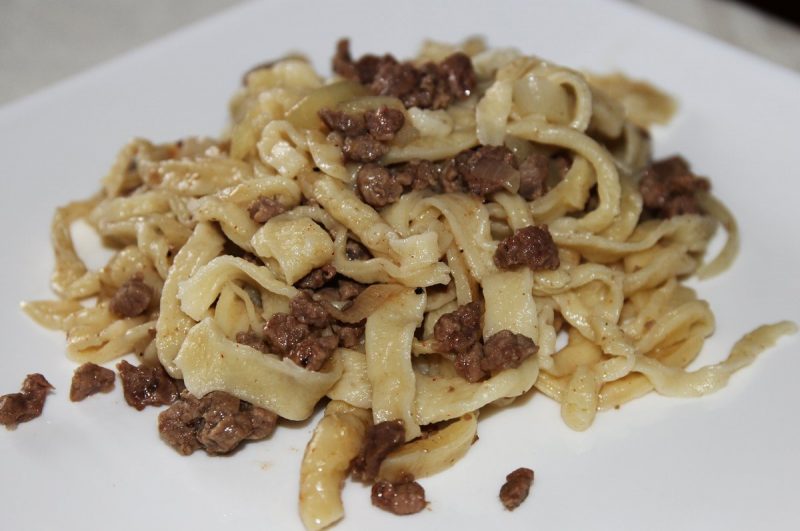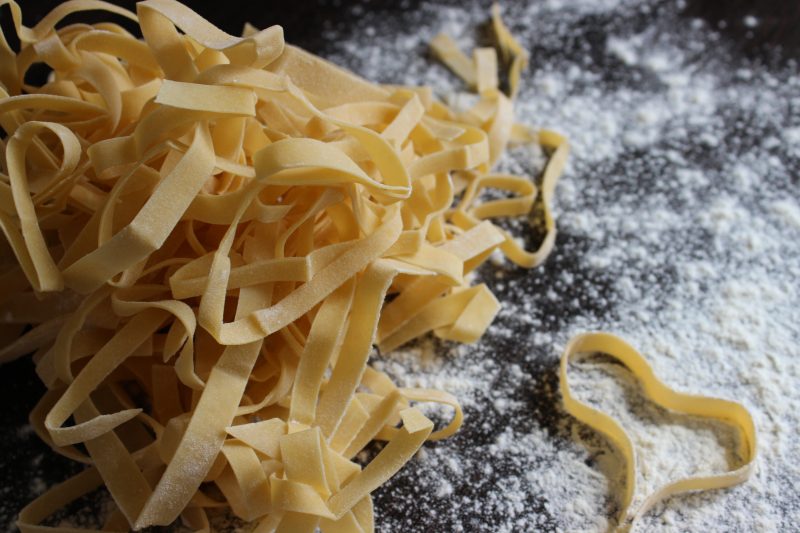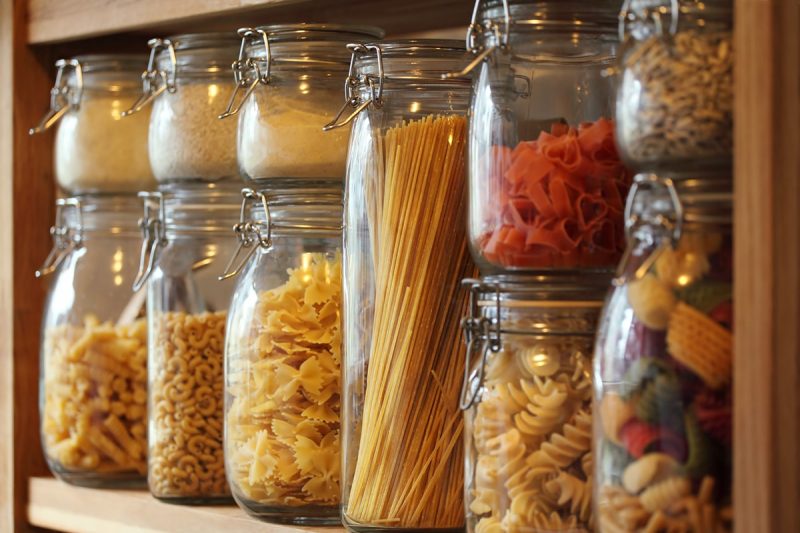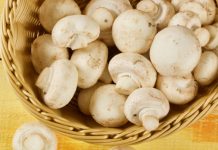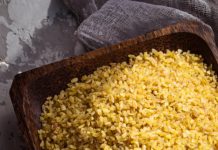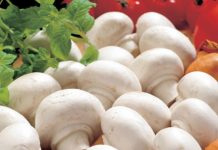Home-made noodle dough is a traditional recipe for Soviet housewives to provide families with a hearty lunch or dinner. Do-it-yourself flour products today are in the same demand. What could be tastier than a fragrant soup with delicate and unimaginably appetizing “curls” literally melting in your mouth? The technological process of obtaining a quality basis for pasta has certain features, which are described in detail in the material presented.
Material Content:
Classic homemade noodle dough
For delicious noodles cooked at home, you will need a minimum amount of ingredients, but the resulting product can not be compared with the store version.
Ingredients:
- Art. premium wheat flour;
- fresh chicken egg;
- fine salt to taste.
Cooking:
- In a small bowl, a fresh egg and salt (on the tip of a knife) are combined and slightly loosened.
- Sieved flour is added in small portions to the mixture. The dough should turn out cool and elastic.
- The lump turns into a film and leaves to "rest" for about half an hour.
- Then it is rolled with a rolling pin into a layer with a thickness of not more than 1 mm.
- The surface of the sheet is sprinkled with flour, after which the dough is rolled up, which is cut with a sharp knife into thin noodles.
The resulting products are dried and used for their intended purpose. The remaining product is stored in a jar or cloth bag.
Noodle Slicer Recipe
For the perfect Italian pasta cooked on your own, you have to stock up on hard flour.
Ingredients:
- 5 domestic eggs;
- Art. premium wheat flour;
- Art. hard flours.
Cooking:
- Initially, a tight, homogeneous mass is mixed manually or in a dough mixer. It is strictly forbidden to add salt to the noodle cutter dough, since it corrodes the surface of the rolls of the device.
- To gain elasticity, the formed kolobok is wrapped in a towel or film, kept at room temperature for about half an hour.
- The infused ball is divided into small rectangular parts, each of which is rolled through a rolling machine. You need to start with the largest gap between the rollers, reducing the gap each time. At the end of the first rolling, the layer is folded so that there are no torn edges.
- For cutting the sheet, a special nozzle is installed, with the help of which strips of the desired width are obtained, which are laid out on a table for drying.
If the parts of the noodles are poorly separated from each other, it is necessary to repeat the batch with the addition of sifted flour and start the production process again.
Option for Chicken Soup
Homemade egg noodles, cooked on a high-quality chicken broth with vegetables and spices, is always a hearty soup with an unusual taste and aroma.
Ingredients:
- 200 g of flour;
- 2 eggs;
- tsp fine salt.
To obtain pasta that does not boil during the heat treatment, flour with a high gluten content (durum wheat) is used.
Cooking:
- 200 g of sifted product are sifted into a bowl, 2 eggs are driven in. If desired, ½ teaspoon of salt is added.
- Kneading is done until it starts to hold its shape well, becomes taut and elastic.
- Then the mass is laid out on a table sprinkled with flour, mixed for another 5 minutes until elastic.
- The “rested” 20 minutes ball is divided into small parts, rolled out and cut as thin as possible.
If the pasta is dried in an oven heated to 200 degrees for 10 minutes, then the result is a delicious ruddy noodles for chicken or mushroom soup.
Homemade Egg Dough
The number of components of the recipe is calculated according to this principle: for every 100 g of flour, 1 egg is taken.
Ingredients:
- 200 g of flour;
- 2 homemade eggs;
- salt as desired.
Cooking:
Egg dough is the basic basis for a “handmade” paste. If noodles are made to prepare meals without further storage, a little salt can be added to the ingredients.
- Of the products listed in the recipe, a dough is kneaded, made into a ball, which is wrapped with a clean cloth, left for half an hour at room temperature.
- The "rested" kolobok is cut in half.
- One part is flattened by the hand. The resulting cake is sprinkled with flour and rolled on a cutting surface into the thinnest layer.
- After 5 minutes of drying, the sheet is rolled up, and almost transparent strips (long or short) are cut with a sharp knife. The second half of the product is used in the same way.
Cooking in a bread machine
To make pasta for pasta in a bread machine, you will need:
- 300 g flour;
- 3 chicken eggs.
The exact proportions of the flour will depend on the size of the eggs and the quality of the bulk component.
Cooking:
- Eggs are driven into the bowl of the device, half of the necessary flour is sifted there, if desired, salt is added.
- Having set the unit to the "Dough" mode, you need to carefully monitor the operation of the unit so that it does not overload. Therefore, experienced housewives are advised to fill the flour gradually, while not mixing a very tight mass, since the bread machine engine may not withstand a large number of products.
- The finished dough should resemble dumplings in consistency. The elastic bun is taken out of the device, kneaded to the desired texture by hand.
No eggs added
You can even knead the noodle dough without eggs in fasting. To diversify such pasta, it is allowed to add components with coloring pigment:
- spinach will give products a green color;
- turmeric or saffron - yellow;
- carrot or tomato juice - orange;
- beetroot component - red;
- shredded dry greens of your favorite spicy herbs will provide products with an interesting speck.
Products for 2 ready-made servings:
- 1 tbsp. l lean oil;
- 100 g wholemeal flour;
- 1/3 tsp natural dye;
- 50 g of hot water.
Cooking:
- The components of the recipe are carefully combined, a dough is kneading until an elastic coma is obtained. Salt is added at will and previously dissolved in water. If you shape the product using a mixer or blender, the finished noodles will have a more airy texture.
- The product is covered with a towel or wrapped in polyethylene, left on the table for 20-30 minutes.
- The layer is rolled into a thickness of not more than 1 mm, sprinkled with flour, then rolled up and slightly pressed by hand.
- The resulting workpiece is cut across the desired thickness. The noodles are straightened and left on the work surface for drying. The time for complete drying of the products is up to 15 hours, but they can be cooked immediately after cooking.
How much to cook, how to chop and store homemade noodles
Homemade pasta requires some attention both at the stage of obtaining the dough, and in the process of further processing for one-time use or harvesting for future use.
How to cook noodles
Freshly prepared miniature products reach the condition almost instantly. On average, the process takes no more than 7 minutes, so you should not run away from the stove during the heat treatment of the product. In order to keep the broth transparent when receiving the first dish, thin strips / curls are shaken off the flour, boiled in a separate container for three minutes, only after that they are placed in the main dish, where they are heated for another 3-4 minutes.
The dried pasta takes a little longer to cook. When boiling the liquid again, the product should be heated for 5-7 minutes. Time depends on the thickness and length of the products, on average, the heat treatment process is up to 10 minutes.
Slicing thin pasta
The dough for homemade noodles can be chopped not only with professional noodles, but also manually. To do this, you need to roll out the finished product as thin as possible. Let it dry for a quarter of an hour, then roll into a tight roll. Further actions depend on what kind of pasta / noodles should be obtained at the exit. For short pieces and a delicate web, the roll is cut with a herringbone, and for long spaghetti - directly.
Then the products are opened, laid out on baking paper or dry cotton fabric for drying. The time is set individually by an experimental method. The duration of the process depends on the composition of the test: the amount of liquid ingredients, the thickness of the rolling and cutting, the temperature and humidity of the room.
Product storage conditions
Many housewives cook noodles for the future. This is quite beneficial, because it is better to spend an hour or two, then quickly feed the family a hearty and tasty first and second a dish. Storage of home-made preserves certain rules.
- sliced products must be completely dried, otherwise the product will mold and become unusable;
- store noodles for more than a month preferably in frozen form, pouring pasta into a plastic bag;
- long strips / spaghetti should be placed in a paper bag, short - in a cloth bag or glass bottle, covered with parchment paper;
- boiled noodles should be processed with butter / sunflower oil, placed in a special container / zip bag, sent to the refrigerator.
It remains to choose the desired options for preparing the best dough, the rest depends on the acquisition of skills and personal mastery.





